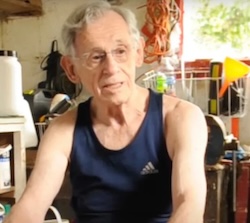Exercise Secrets — The Art of the Long Game
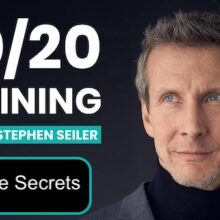
Exercise Secrets can make all the difference for making an exercise plan and sticking to it, especially as you age. Learn what to do and how to do it. Your reward will be staying younger, longer.
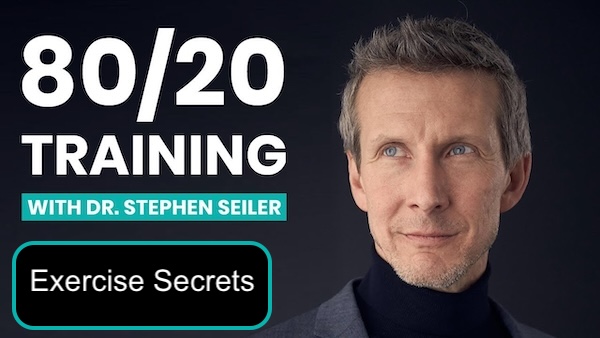
Exercise secrets can be particularly useful to us as we age and things if left unattended begin to fall apart. Whether you’re a complete novice to exercise, used to be athletic, or still are, Dr. Stephen Seiler is going to be inspiring and helpful.
Dr. Seiler is a world-renowned sports scientist, the author of 100 peer reviewed publications, and is a professor in Sports Science at the University of Agder in Norway. He specializes in studying elite-level sports performance, but pertinent to the common person, he tells us about what he’s learned from them that can be so useful to us, especially as we age.
What I’ve done in this post is to summarize the two-hour video of Dr. Rangan Chatterjee’s interview with Professor Seiler entitled Habits To Heal The Body: Truth About Exercise, Burnout, Muscle & Preventing Injuries (see below), and I also added my own exercise secrets.
Here’s what’s covered:
- The Art of the Long Game — what we can learn from elite athletes
- Exercise Secret #1: The 80/20 Rule
- The 80/20 blueprint
- Examples of Zone 2 and Zone 5 training
- Application of 80/20 Rule to your fitness regime
- Exercise Secret #2: Finding the Balance between Stress and Recovery
- The Heart as a Stress-Ometer — the HRV Story
- Wearables and HRV
- Exercise Secret #3: Tailor the Training by Age and Exercise Experience
- The Richard Morgan story
Let’s dig in…
The Art of the Long Game
Elite athletes have dedicated decades to mastering their craft, and they hold valuable insights that extend far beyond their sports that can be helpful to the average person seeking to improve their fitness, especially as the aging process begins to compromise a person’s physical abilities.
There’s much that us average Joes and Janes can glean and use from the rigorous training routines of the elite. Herein lies the essence of the art of the long game. Elite athletes, driven by clear performance goals, have honed the ability to sustain peak performance over the course of years. Their careers, often spanning decades, demand the creation of sustainable training programs that push the boundaries of adaptation while ensuring health and longevity.
What can we distill from the discipline of elite athletes? We can examine the parallels between the world of competitive sports to our daily lives. Like these athletes, we seek a sustainable lifestyle – one where exercise, nutrition, sleep, and work harmoniously coexist.
Basically, the challenge lies in managing stress levels, and a sustainable mix of low and high-intensity exercise routines, both of which are commonly mastered by these athletes.
Drawing an analogy with Formula 1 racing, where innovations trickle down to family cars, when it comes to life-long exercise, the question for us becomes: How do we adjust the levers of frequency, duration, and intensity in our training to find a sustainable balance?
If you have two hours to spare, watch Dr Rangan Chatterjee interview Professor Stephen Seiler. If you don’t, scroll down and read my synopsis of the interview, as well as some of my own commentary about how you can fight the physiological ravages of aging through exercise.
I’ve reorganized the video content into three exercise secrets:
- The first is the 80/20 rule which posits that most of your cardiorespiratory exercise should be low intensity;
- The second is about the importance of rest and recovery; and
- The third is about tailoring your training to fit your age and exercise experience.
Exercise Secret #1: The 80/20 Rule
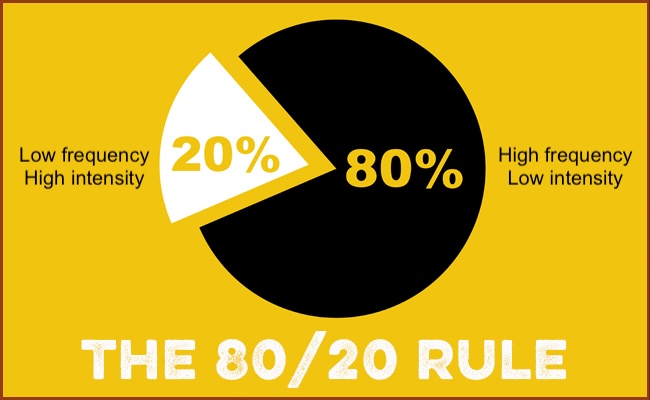
One of the key revelations from studying elite athletes is the 80/20 rule, says Professor Seiler. Contrary to common assumptions, 80% of their training occurs at low intensities.
This principle underscores the importance of building a robust base through extensive low-intensity workouts. (Later, I will refer to this as Zone 2 training.) A common thread shared by athletes whose sport requires high cardiorespiratory capacity (both aerobic and anaerobic), such as runners, rowers, or cyclists, is that they endeavor to establish a strong cardiovascular base through low-intensity exercise keeps their heart rates low enough so they can sustain the effort for a 30 minutes or longer, depending on what their sport requires.
The whole point of the 80/20 rule is sustainability — you need to adopt an exercise system that prioritizes endurable, long-term progress. In order for sustainability to endure, exercise must become seamlessly ingrained into your life routine, just as is your role as parents/grandparents, your work, your meals and social engagements. The lesson is clear: life, like sports, is a long game, and sustainable routines are the linchpin.
Professor Seiler’s 80/20 Blueprint is characterized by three zones of exercise intensity, which I distill down to two that you can use as your template to apply to your own fitness regime, while finding the balance between stress and recovery.
The 80/20 Blueprint
Professor Seiler talks about the low intensity green zone, the medium intensity green zone and the high intensity red zone.
Low Intensity (Green Zone)
- Characteristics: Conversational, flat heart rate, sustainable for extended periods.
- Analogy: A leisurely walk in nature, a steady bike ride, or a conversation-filled jog.
- Takeaway: This zone fosters endurance, mental relaxation, and prolonged engagement.
- My comment: If you’re breathing so comfortably that you could engage in a long conversation, the intensity is below Zone 2, and thereby need to be increased.
Medium Intensity (Yellow Zone)
- Characteristics: Increased lactate production, sustainable for a moderate duration.
- Analogy: A brisk hike or a challenging bike ride that requires focus and purpose.
- Takeaway: While beneficial, this zone triggers stress responses and necessitates longer recovery.
- My comment: This is closer to Zone 2 than the Green Zone (which I describe below), and should be done for 30-plus minutes, three to six times per week. 80% of your training probably should be between Green and Yellow.
High Intensity (Red Zone)
- Characteristics: Elevated heart rate, intense breathing, non-sustainable for extended periods.
- Analogy: A sprint, a high-intensity interval training (HIIT) session, or a vigorous workout.
- Takeaway: Useful but demands careful balance; excessive exposure can lead to prolonged recovery times.
- My comment: This is Zone 5 training (description below) that you want to do once or twice per week.
These colored zones relate to a numerical depiction of zones, from one to five, of which only two are pertinent to most of us: Zone 2 and Zone 5.
The reason that Zones 2 and 5 are the only ones that need to be in your cardio workouts is because doing them is the most efficient way to meet a fitness objective that we should all have: to increase our Vo2 max.
And the reason you want to do this is because, as I wrote in How To Reduce Obesity In Older Adults and Improve VO2 Max:
VO2 max is related to functional capacity and human performance, and has been shown to be a strong and independent predictor of all-cause and disease-specific mortality.
You improve your VO2 max by:
- Doing aerobic exercise at an intensity whereby you could have a conversation in brief sentences or paragraphs, although perhaps not comfortably, for 30 minutes or more, three to five times per week (Zone 2); and
- Doing anaerobic exercise at an intensity whereby you could only blurt out one or two words at a time, for a variety of timeframes (see below) once or twice per week (Zone 5).
What I just described is the method that Dr. Peter Attia has popularized, and the science supports, as an efficacious method of improving Vo2 max.
You want most of your cardio exercise time to be in low-intensity Zone 2 to lay the foundation, like the base of a pyramid, and a much shorter amount of time of high-intensity Zone 5 to raise the peak of the pyramid. You then can envision the area encapsulated by the base and peak to be your Vo2 max capacity.
Examples of Zone 2 and Zone 5 Training
The exercise modality
If you’re 40+ years old or are new to exercise no matter your age, choose an exercise that is low impact, such as walking on a treadmill incline, biking (outdoors or indoors), elliptical machine, stairmaster, or rowing.
You could also do cardio-based weight training, although with that exercise modality it’s difficult to stay in the Zone 2 range, as invariably you’ll either be below or above the intended pulse/breathing range.
If you’re below 40, are exercise-adapted, and are injury-free, you may include sprinting on flat ground or up stairs as additional exercise options.
The exercise length and intensity
Any of the types of exercise described above are suitable for Zone 2 and 5 training. You begin where you’re at; meaning, you do what you can do without excessive strain until you become acclimated to the exercise, whereupon strain (ie intensity) is the aim for Zone 5.
For Zone 2, do the exercise for 30 minutes or longer, beginning with three days per week and expanding to five or six. Assuming you gradually increase the frequency as you become adapted to the exercise, even six days per week can be tolerated given the low intensity of effort. Remember, Zone 2 is for building the baseline, and that’s done by long-duration, low-intensity aerobic exercise.
For Zone 5, you have several options:
- 30/90: Go all out for 30 seconds and rest for 90 seconds, repeat 8 times.
- 60/180: Go as hard as you can for one minute and rest for two minutes, repeat 8 times.
- 240/180: Go as hard as you can for four minutes and rest for two minutes, repeat 8 times.
Keep these five points in mind:
- Unless you’ve already trained like this, it’s likely that you will not be able to do eight rounds with similar intensity. Don’t try until you’re ready.
- The exertion level you apply to each round needs to reflect that you’ll be doing eight rounds. You do not want to be so gassed after four rounds that you can’t muster any effort for the remaining ones.
- There are many variations on this Zone 5 theme, but what they all have in common is an intensive effort relative to some fairly short duration, followed by a longer active rest. (An example of active rest would be to walk after each sprint, or to slowly pedal after the bike sprint.)
- If inexperienced with this time of exercise, go for once a week; otherwise twice is enough.
- A good time to schedule one of your Zone 2 training days is after a Zone 5 day, because it will help with sore legs and reduce recovery time.
Application of 80/20 to Your Personal Fitness Regime
What I wrote about Zone 2 and Zone 5 training is closely related to what Professor Seiler spoke about in the video, but nonetheless was a departure from what he addressed, so let’s get back to that as it relates to 80/20.
Initial Phases: Frequency and Duration
For beginners or those recommitting to fitness, Professor Seiler says that prioritizing frequency is paramount. Establishing a routine of consistent workouts (frequency) precedes gradually increasing session lengths (duration).
He emphasizes the significance of staying in the “green zone” (Zone 2) during training, highlighting its role in minimizing the risk of injuries. By gradually introducing adaptations and focusing on neglected aspects like bones and tendons, athletes build durability and resilience.
Here are some additional points:
- Managing Duration for Adaptation: Increasing workout duration within the green zone gradually enhances physiological adaptations. As the body adapts, the stress-recovery balance improves, enabling longer, sustainable efforts.
- Holistic Stress Management: The 80/20 rule extends beyond physical stress, encompassing mental and emotional well-being. Integrating stress management into training plans ensures a holistic approach to fitness.
Exercise Secret #2: Finding the Balance between Stress and Recovery
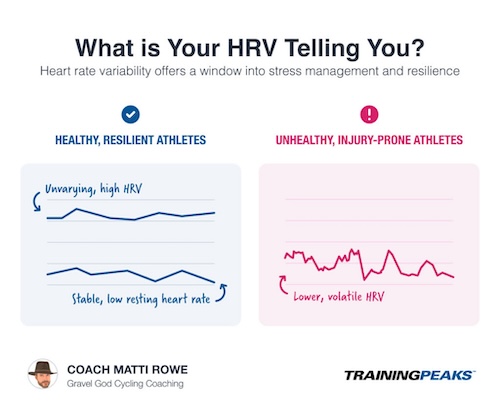
In exercise terms, stress typically refers to the physiological impact of the exercise, how it stresses the body. Some stress is necessary. Among the three exercise secrets, this one might be the most important, because the body can not adapt to the exercise by getting stronger without responding to stress during the recovery period.
Keep these points in mind:
- Understanding the Stress Response: Training-induced stress activates the body’s adaptive mechanisms. However, excessive stress can impede recovery, affecting day-to-day functionality.
- The 24-Hour Cycle: Humans operate on a 24-hour cycle, necessitating efficient recovery within this timeframe. Consistent high-intensity training can disrupt this cycle, leading to cumulative stress and reduced overall recovery.
- The 80/20 Principle: The 80/20 rule emphasizes spending 80% of training time in the green/2 zone – a sustainable, low-stress approach. This allows occasional high-intensity workouts (20%) without compromising recovery.
- Linking Stress and Training: Acknowledging the impact of training stress on overall stress levels is crucial. Striking a balance through the 80/20 model ensures sustainable progress and mitigates the risk of burnout.
- Rediscovering Lost Foundations: The sedentary lifestyles of adults in their 30s and 40s and beyond often lead to the erosion of the physical foundation built during childhood and young adulthood. Through a systematic 12-week approach that focuses on progressive intensity, former athletes/newbies can rebuild/build their foundation, instilling resilience, and (re)acquainting them with the joy of movement.
- Reducing the Risk of Injury: By staying in the “green zone” (Zone 2) during training, you reduce the risk of injuries. By gradually introducing adaptations and focusing on neglected aspects like bones and tendons, you build durability and resilience.
The Heart as a Stress-Ometer — the HRV Story
Professor Seiler introduces the heart as a multifaceted entity, functioning not only as a pump but also as an indicator of stress levels. Heart rate variability (HRV) becomes a crucial metric, offering insights into the delicate balance between sympathetic and parasympathetic nervous system activation.
He doesn’t delve much into HRV, so I will provide some context.
You can think of HRV as the dance of your heartbeat. It refers to the variation in the time between your heartbeats. While your heart rate might seem pretty consistent at first glance, these tiny beat-to-beat differences hold valuable information about your nervous system’s health and your body’s ability to adapt to stress.
Why is a High HRV Important?
A higher HRV generally indicates a healthier and more adaptable nervous system. It suggests your body can respond effectively to different situations, smoothly transitioning between relaxation and activity. This flexibility is associated with numerous benefits, including:
- Reduced stress and anxiety: A healthy HRV helps your body regulate stress hormones and recover from stressful situations effectively.
- Improved cardiovascular health: Higher HRV has been linked to a lower risk of heart disease, high blood pressure, and stroke.
- Enhanced cognitive function: Research suggests HRV may be associated with better memory, focus, and overall brain health.
- Stronger immune system: A more adaptable nervous system might contribute to a better immune response and faster recovery from illness.
Boosting Your HRV
It’s important to avoid simply comparing your HRV number to a single “ideal” value. Instead, focus on your individual baseline and track changes over time. Look for gradual increases in your HRV, which indicate improvement.
Several lifestyle practices can improve your HRV:
- Regular exercise: Particularly engaging in moderate-intensity activities like brisk walking, cycling, or swimming.
- Stress management: Techniques like meditation, yoga, and deep breathing can help calm your nervous system.
- Quality sleep: Aim for 7-8 hours of quality sleep each night to allow your body to fully recover.
- Healthy diet: Prioritize fruits, vegetables, whole grains, and lean protein while limiting processed foods and sugary drinks.
- Social connection: Spending time with loved ones and building strong relationships can positively impact your stress levels and overall well-being.
Remember, improving your HRV is a journey, not a quick fix. Try adopting these practices into your daily routine. But there is an issue: you can’t manage what you don’t measure, and measuring HRV at home is problematic.
Wearables and HRV
While wearables like FitBits and Apple watches provide valuable metrics, Professor Seiler warns against over-reliance on single metrics and emphasizes the importance of understanding the limitations of estimates.
As concerns HRV, there are several ways to measure it, and the optimal method for you depends on your needs and accessibility. Let’s talk about some options.
Clinical Settings:
- Electrocardiogram (ECG): Considered the gold standard for HRV measurement, this medical test uses electrodes attached to your chest to record your heart’s electrical activity. It provides highly accurate and detailed data, but requires visiting a healthcare professional.
- Holter monitor: This portable device worn for 24-48 hours continuously records your ECG. While less detailed than a standard ECG, it offers valuable insights into daily HRV fluctuations.
Consumer Devices:
- Fitness trackers and smartwatches: Many wearables estimate HRV using optical sensors that track blood flow variations on your wrist. While convenient and affordable, their accuracy can vary depending on the device and individual factors.
- Heart rate chest straps: These straps offer improved accuracy over wrist-based sensors by directly measuring your heart’s electrical activity. Popular among athletes and fitness enthusiasts, they can be more expensive than wrist-based options.
Apps and Online Tools:
- Meditation and mindfulness apps: Some apps use your phone’s camera to track subtle variations in your face color caused by heart rate changes. The accuracy might be limited, but these apps can be convenient for basic HRV monitoring.
- HRV analysis software: This software analyzes data recorded using devices like ECGs or Holter monitors. It provides detailed reports and visualizations of your HRV metrics, but usually requires additional technical knowledge and data from compatible devices.
In my case, I use a Fitbit Inspire 3 that measures HRV and various other metrics, such as heart rate, steps, the time spent in various exercise zones, calories used, etc. It measures my HRV as very low (22 milliseconds average), so I hope it’s wrong. Nonetheless, it has prompted me to evaluate what might be causing me stress, which I have yet to pinpoint.
Exercise Secret #3: Tailor the Training by Age and Exercise Experience
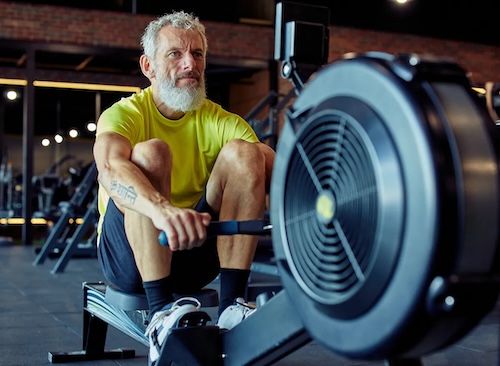
Credit: EatThis.com
Professor Seiler speaks to tailoring your exercise training as a function of experience, frequency and age.
Although both weekend warriors and those new to exercise are encouraged to adopt the 80/20 Blueprint as best fits their abilities, in both cases they need to be mindful of adjusting the frequency and intensity output relative to sleep, energy and performance. The bottom line here is that progress is not a straight line up, but can ebb and flow. If you’re doing it right, on average — say month to month — you should be improving.
For those new to exercise, or haven’t done it with any regularity for years, his advice is to start small. This is important not only so that you don’t injure yourself, but also to enhance compliance; ie: sticking to the schedule. If you make it too tough, you’ll inevitably find excuses to not workout. So, take small bites until you develop a taste for exercise and then gobble it up.
Of course, eventually, no matter what we do, at some point we stop improving, even stop maintaining what we’ve built. Sad though that may be, you’d be astounded by how long you can still exercise at a high level.
Inspirational Richard Morgan
Richard Morgan is an example of what’s possible. He’s about 92, didn’t begin exercising until he was 73, but has an unusually high percentage
of muscle mass and cardiorespiratory fitness as measured by Vo2 max.
If you have six minutes to spare and want to be inspired, watch this video about him, as reported by the Modern Healthspan channel.
Richard Morgan is a poster boy for what Professor Seiler is talking about. At this point in his life, Morgan is training to maintain performance levels in order to optimize health and functionality. This is the goal as we get to the last quarter of our expected lifespan. And to do this, you need muscle.
Professor Seiler underscores the significance of strength training in older individuals, focusing on functional movement and mimicking childhood activities. Think of functional movements as walking up several flights of stairs with a suitcase in each hand, or lifting a heavy carry-on above your head to place it overhead storage on a plane. (I think I must have gotten the travel bug!). Childhood activities refer to being able to easily get up and down off the floor, or have agile lateral movement, or be able to bounce around a bit.
I’ve written some posts complete with “how to” videos that can show you how to become more mobile and functionally fit. These are packed into a six-part series. Start here. And it that’s not to your liking, scan my exercise posts.
Your Exercise Secrets Takeaway
In unraveling the endurance athlete’s journey through the lens of Professor Seiler ‘s coaching wisdom, we find a narrative woven with resilience, adaptability, and a profound respect for the intricate balance between pushing boundaries and embracing recovery.
His 80/20 Blueprint emerges not just as a training strategy but as a sanctuary where athletes discover the enduring essence of their capabilities.
In conclusion, remember these five things:
- Commit yourself to exercising, both to enhance Vo2 max and strength/muscle
- A high Vo2 max is the best way to reduce you chances of dying from any cause, and it remains the most important single thing you can do to improve healthspan, if not lifespan.
- Strength and muscle is necessary for functional fitness; afterall, you need to be able to lift yourself off the floor, up stairs, and carry things. Unfortunately, we lose lean muscle every year as we age, so you must do resistance training (calisthenics or weightlifting) to stop it, slow it down, or reverse it.
- Start where you need to start in terms of intensity and frequency so that you don’t stop. Find the balance between making improvements without dreading the process, because then you’ll quit.
- Find an exercise buddy or trainer to help keep you on the path.
If you think this post may be helpful to someone, send it to them!
Last Updated on March 9, 2024 by Joe Garma

